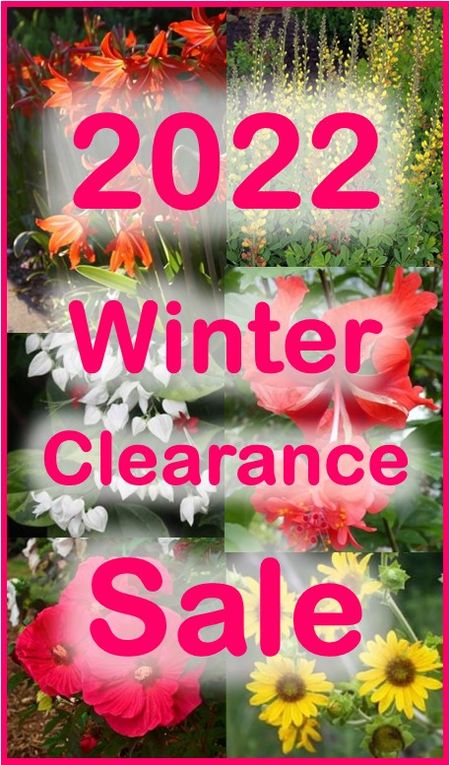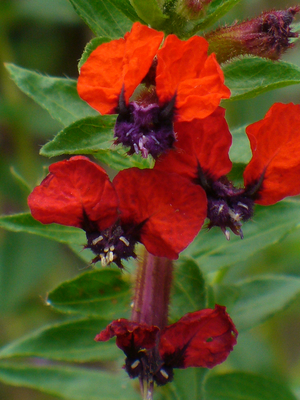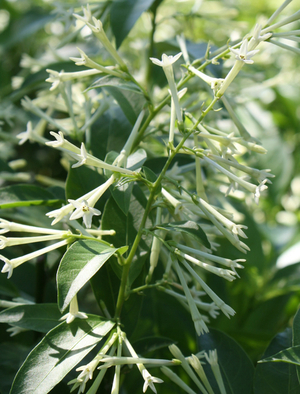
Place your Spring 2022 Orders now and have them shipped up to 6 months or more from now. Just select your preferred shipping week at check out. If you would like your plants shipped after the date offered by our system just denote that in the comments section at check out. We are more than happy to work with you any way that we can.
Check out our 2022 Winter Clearance Sale!
Our 2022 Winter Clearance Sale is now in full swing with 150 great plants marked down as we literally try to make room for our new spring crops in our nursery and greenhouses. This includes some of our most popular indoor plants like String of Nickels and some Hoyas, select perennials like the DECADENCE© Baptisia and SUMMERIFIC© Hardy Hibiscus that are currently 25% off, a selection of native perennials and vines, heirloom perennials and shrubs, tropical plants, plants for pollinators and more! Get yours while supplies last! Here is a taste of some of what you'll find:
"What are Baptisia?" you say. All members of the genus Baptisia, a.k.a. False Indigo, are native to North America and no where else on the planet. Aren't we lucky! These are exceptionally tough and easy, long-lived, taprooted, clump-forming perennials and hybrids. For the past several years, hybridizers like Hans Hansen of Walter's Gardens, Dr. Jim Ault of the Chicago Botanic Gardens and Chicagoland Grows®, and Tony and Anita Avent from Plant Delights Nursery have been selecting from their breeding lines some of the most vigorous and reliable cultivars (a.k.a 'nativars' since these are hybrids of native species some of which can also occur in nature) as well as selecting for outstanding color ranges including bicolors and some that change color as the individual pea-like flowers age. I believe that it was Tony Avent who coined these as the "Lupines for the South" a few years ago and it perfectly describes these perennials only they are adapted to both cold and warm climates in zones 4-9 and can actually outperform Lupines in the garden and landscape. Baptisia are like a fine wine in that they simply get better with age. The longer these perennials are established the more dense spikes of pea-like, bee-pollinated flowers they can produce with some cultivars known to produce as many as 100 or more individual flower spikes per plant in a single season. Mature plants can do it year after year with little to no care and almost no maintenance. It usually takes them about 3-4 years to mature in the garden and landscape but it is so worth the wait. Provide Baptisia with a full to mostly sunny site, in average to well-drained, fertile soils for optimum vigor and flowering. Plan for them grow to an average mature size of about 2-4' high and 2-4' wide. Once you plant them, just leave them in place as moving them will increase the time it takes for them to mature into the exceptional beauties that they can be. To see our full range of Baptisia or False Indigo just click here. All images of DECADENCE© Baptisia are courtesy of Walter's Gardens, Inc., all rights reserved.
How Terrific are SUMMERIFIC© Hibiscus? These Hardy or Perennial Hibiscus are also "nativars" as they have all been developed from our native US species. These belles of the garden produce some of the largest and showiest flowers of any of our North American natives and nativars with flowers that can exceed 10" wide thanks to the genetics of the aptly named Hibiscus grandiflorus. The most recent and extensive breeding work and plant trials of the Hardy Hibiscus has been done by Hans Hansen and crew at Walter's Gardens in Zeeland, Michigan. Some of these introductions have been selected for the SUMMERIFIC© series that come in a variety of colors ranging from deep wine red, through pinks, and whites as well as bicolored flowers. Many in this group of introductions have also been selected for their deep dark burgundy to near black foliage adding to their usefulness in the garden and landscape. Pair these dark foliaged Hibiscus with other garden plants and flowers in yellow, orange, pink, white, and chartreuse shades as well as greens for a wonderful contrast along with the summerlong show of traffic-stopping huge colorful flowers. The Walter's Gardens selections are indeterminate flowering which loosely translates to flowering all up and down the stems instead of just in the top 1/2 to 1/3 of the plant like some of the older cultivars and most of the species have a tendency to do. They also tend to begin flowering earlier and longer as well as being more compact with better branching habits imparting a little refinement and thus making them useful even in the most formal of garden settings. Like the native species, these hardy clump-forming perennials prefer a rich moist soil and can even be planted along the edge of ponds, in bog gardens, and will do well under average garden conditions if provided with additional moisture during dry spells in summer. Provide the SUMMERIFIC© Hardy Hibiscus with a full to mostly sunny site in a rich fertile soil for optimum vigor and flowering. Click here to see our entire selection of Hardy Hibiscus. All images of SUMMERIFIC© Hardy Hibiscus are courtesy of Walter's Gardens, Inc., all rights reserved.
Natives for Hummingbirds
Red Buckeye, Aesculus pavia: The spikes of red, orange, and yellow tubular flowers are produced just in time for the arrival of our Ruby Throated Hummingbirds. They are held at the tips of the bare branches in late winter and early spring here in zone 8B. In the wild the plants are generally less than 6-8' high by 4-6' wide but in cultivation they can close in on 10' high and equally wide. This native species prefers a full to mostly sunny site but are fairly adaptable as long as they receive at least a half a day of direct sunlight. Provide an average to well-drained, fertile soil for optimum vigor and flowering.
Tangerine Beauty Crossvine, Bignonia capreolata 'Tangerine Beauty': This heavily flowering orange colored selection of this native woody vine can outshine all of its brethren in early spring and is keyed in to the arrival of hummingbirds. Masses of rich orange, trumpet shaped flowers with a contrasting yellow throat can literally cover the sunbathed portions of the plant attracting hummingbirds, larger bees, as well as butterflies. Interestingly, the flowers have the fragrance of the Bit O'Honey candy my mother ate when we were growing up, when we left her any, LOL. The foliage is deciduous to semi-deciduous and any remaining foliage on the plant can take on red, maroon, and deep burgundy tones for winter. The Crossvine is most commonly found in consistently moist areas in nature but has proven to be quite adaptable to average garden conditions even in full sun which is optimum to maximize its flowering potential. This is a moderately large vine and makes a good choice for a large trellis, arbor, or it can be allowed to trail along the top of a fence with periodic training. Easy and reliable.
Louisiana Red Coral Honeysuckle, Lonicera sempervirens 'Louisiana Red': Coral Honeysuckle is probably my favorite and most recommended woody vine for attracting hummingbirds to the garden and landscape and it is hardy from zones 4-9. For many years we observed this particular native beauty, and what would become the cultivar Louisiana Red, flowering along the edges of a grown up fencerow in mostly shade. And everyear it proved that it could overcome these less than perfect conditions to put on a spring to fall show attracting hummingbirds and occasional larger butterflies with its large clusters of 2" long deep coral red tubular flowers. New growth, especially in the cooler months of the year, can range into red and maroon but is nearly always tinged red adding to the plant's interest. Established plants can flower in near continuous overlapping cycles from late winter into fall and pollinated flowers are followed by clusters of bright red berries that are relished by songbirds. The Coral Honeysuckles climb by twining and all grow to about 8-12' making them a good choice for smaller arbors, posts, and medium-sized trellises or they can be trained along a 6' high or larger fence. Provide a full sun to part shade site in a fertile, well-drained soil for optimum vigor and flowering. Unlike the invasive Japanese Honeysuckle, this species is neither aggressive nor invasive but happily stays where it is planted.
Enjoy!
![]()


-1.JPG)
.JPG)


